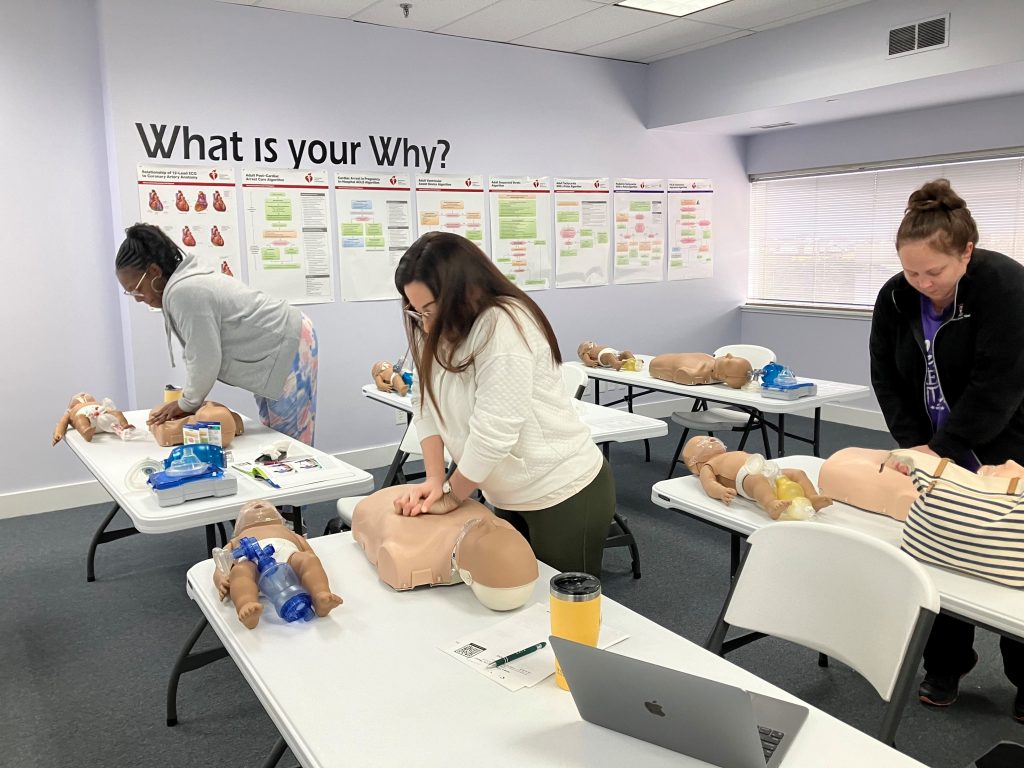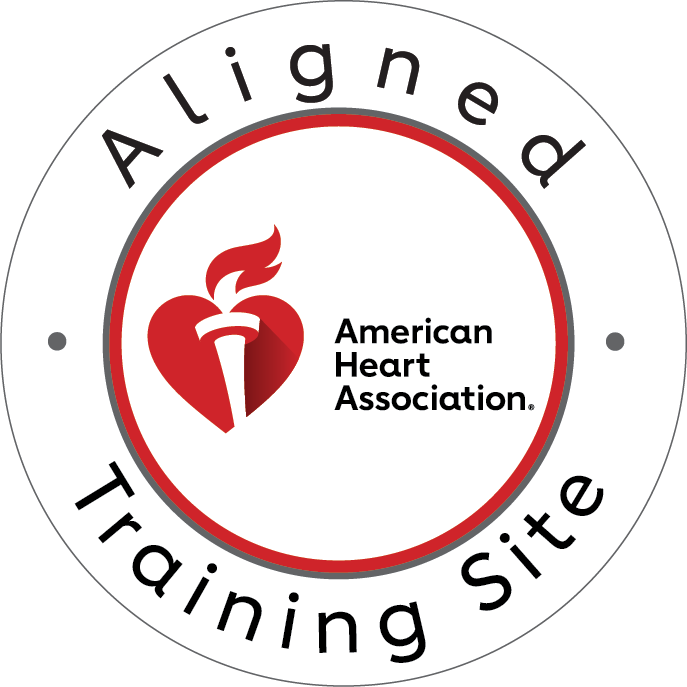Breaking Down the Differences Between CPR and First Aid Training
In emergency situations, a quick and effective response can mean the difference between life and death. Two critical skills that can save lives are cardiopulmonary resuscitation (CPR) and first aid. While both are essential for emergency preparedness, CPR and first aid certifications cover different aspects of emergency care and require distinct training.
CPR focuses specifically on maintaining blood circulation and breathing in individuals who have experienced cardiac or respiratory arrest. First aid, on the other hand, encompasses a broader range of emergency care techniques for various injuries and sudden illnesses. Understanding the differences between these certifications can help individuals choose the right training for their needs and become better prepared to handle emergencies.
CPR Certification
CPR, or cardiopulmonary resuscitation, is a lifesaving technique used when someone’s breathing or heartbeat has stopped. CPR certification trains individuals to recognize the signs of cardiac arrest and provide immediate chest compressions and rescue breaths to maintain blood flow to vital organs until professional medical help arrives.
CPR certification typically covers the following skills:
- Recognizing cardiac arrest
- Proper hand placement and technique for chest compressions
- Rescue breathing
- Use of an automated external defibrillator (AED)
There are several types of CPR certifications available, depending on the individual’s needs and professional requirements:
- Basic Life Support (BLS): Designed for healthcare professionals and first responders, BLS certification covers adult, child, and infant CPR, as well as AED use and choking relief.
- Advanced Cardiac Life Support (ACLS): This certification is for healthcare providers who respond to cardiovascular emergencies. It covers advanced techniques and medications used in treating cardiac arrest and other cardiovascular emergencies.
- Pediatric Advanced Life Support (PALS): Focused on pediatric emergency response, PALS certification trains healthcare providers in the nuances of treating infants and children in cardiac arrest or other life-threatening situations.
First Aid Certification
First aid certification provides individuals with a broader set of skills to handle various emergencies and minor injuries. Unlike CPR, which focuses specifically on cardiac and respiratory emergencies, first aid covers a wide range of scenarios that may occur in daily life, at work, or during recreational activities.
First aid certification typically covers the following skills:
- Assessing emergencies and ensuring scene safety
- Calling for emergency medical services
- Treating wounds, burns, and bleeding
- Managing sprains, strains, and fractures
- Recognizing and responding to heat and cold-related illnesses
- Handling allergic reactions and anaphylaxis
- Responding to choking incidents
- Basic CPR techniques (often included but not as comprehensive as dedicated CPR courses)
Common first aid certification programs are offered by organizations such as the American Red Cross, American Heart Association, and National Safety Council. These programs may vary in duration and depth of content, but they all aim to equip individuals with essential skills to provide immediate care in emergencies.
Key Differences Between CPR and First Aid Certifications
While both CPR and first aid certifications are valuable for emergency preparedness, they differ in several key aspects:
Focus and primary skills:
- CPR certification focuses intensively on maintaining circulation and breathing in cardiac arrest situations.
- First aid certification covers a broader range of emergency situations and injuries, with less depth in any single area.
Duration of training:
- CPR courses are typically shorter and often completed in a few hours.
- First aid courses are usually longer, sometimes spanning multiple days, due to the broader range of topics covered.
Certification requirements:
- CPR certification often requires demonstrating proficiency in chest compressions and rescue breathing on mannequins.
- First aid certification may involve practical demonstrations of bandaging, splinting, and other techniques, as well as written exams.
Renewal intervals:
- CPR certifications generally need to be renewed every 1-2 years.
- First aid certifications often have longer validity periods, typically 2-3 years, though this can vary by organization.
Choosing the Right Certification
When deciding between CPR and first aid certifications, consider the following factors:
Factors to consider:
Personal or professional requirements: Some jobs may require specific certifications.
Your typical environment: Consider the types of emergencies you’re most likely to encounter.
Time commitment: Evaluate how much time you can dedicate to training.
Depth of knowledge needed: Determine whether you need specialized skills or general emergency response knowledge.
Combining CPR and first aid certifications: Many individuals opt to obtain both CPR and first aid certifications for comprehensive emergency preparedness. Some training programs offer combined courses that cover both skill sets.
CPR Kansas City: AHA Training Site
For those in the Kansas City area seeking high-quality CPR and first aid training, CPR Kansas City stands out as an excellent option. As an American Heart Association (AHA) training site, they offer a range of certifications to meet various needs.
Introduction to CPR Kansas City: CPR Kansas City is a trusted provider of AHA-certified courses, known for its stress-free and hands-on learning environment. They cater to both individuals seeking initial certifications and those needing to renew their existing certifications.
Available certifications:
- BLS for Healthcare Providers: Essential for medical professionals and first responders.
- ACLS (Advanced Cardiac Life Support): Designed for healthcare providers who respond to cardiovascular emergencies.
- PALS (Pediatric Advanced Life Support): Focused on pediatric emergency response.
- CPR and First Aid courses: Suitable for individuals wanting comprehensive emergency response skills.
Benefits of training with CPR Kansas City:
- AHA-certified courses: Ensures training meets nationally recognized standards.
- Stress-free, hands-on learning environment: Facilitates better retention of critical skills.
- Initial certifications and renewals offered: Convenient for both new learners and those maintaining their certifications.
By choosing CPR Kansas City, individuals can receive top-notch training in a supportive environment, ensuring they are well-prepared to respond effectively in emergency situations.
Conclusion
In summary, while both CPR and first aid certifications are crucial for emergency preparedness, they differ in focus, scope, and application. CPR certification provides specialized skills for cardiac and respiratory emergencies, while first aid certification offers a broader range of emergency response techniques. Understanding these differences helps individuals choose the right training for their needs.
For those in the Kansas City area seeking CPR certification in Kansas City or BLS certification in Kansas City, CPR Kansas City offers an excellent opportunity to gain these vital skills. Their American Heart Association-certified courses provide comprehensive, hands-on training in a stress-free environment.
Don’t wait for an emergency to strike before you prepare yourself. Take the first step towards becoming a lifesaver today by enrolling in a CPR or BLS certification course at CPR Kansas City. Whether you’re a healthcare professional needing BLS certification in Kansas City or an individual looking for CPR certification in Kansas City, their expert instructors and hands-on approach will ensure you’re ready to respond when it matters most.
Visit CPR Kansas City’s website or contact them directly to schedule your training. Remember, the skills you learn could one day save a life – perhaps even that of a loved one. Invest in yourself and your community by getting certified today. With CPR Kansas City, you’ll receive the best CPR training in Kansas City, equipping you with the confidence and skills to make a real difference in emergency situations.





